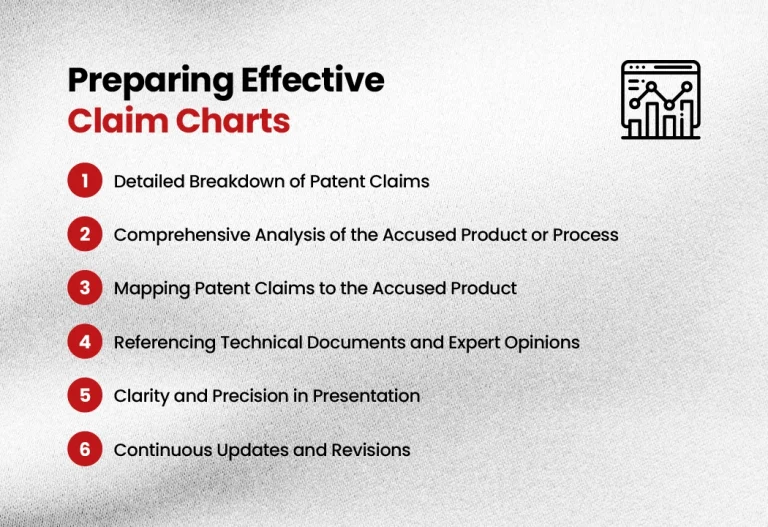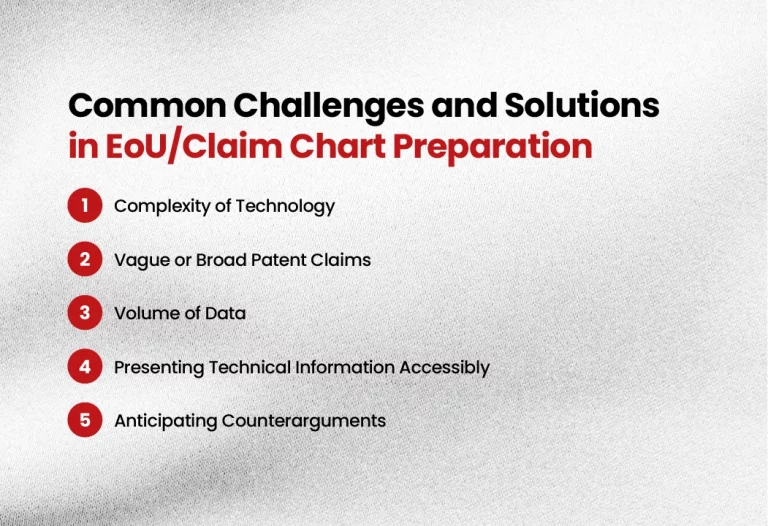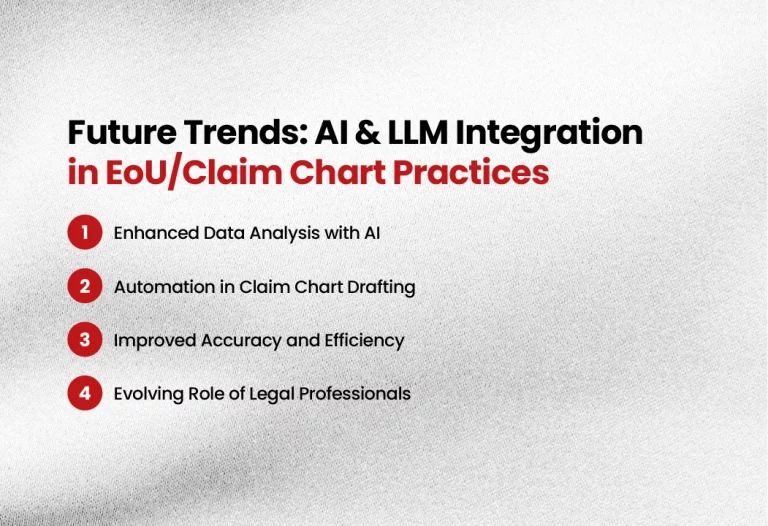Complexity of Technology: One of the biggest challenges is dealing with the complexity of the technology involved in the patent. This can make it difficult to clearly map patent claims to the accused product or process.
Solution: Collaborate with technical experts or engineers who understand the technology. Their insights can help clarify complex technical aspects and ensure accurate representation in the claim chart.
Vague or Broad Patent Claims: Sometimes, patent claims can be overly broad or not clearly defined, making it challenging to establish a direct link to the accused product.
Solution: In such cases, it’s important to conduct a thorough patent analysis and, if necessary, seek a claim construction ruling (Markman hearing) to clarify the scope of the claims.
Volume of Data: In cases involving complex products or processes, the sheer volume of data can be overwhelming, making it challenging to identify relevant evidence.
Solution: Employ a systematic approach to data collection and analysis. Utilize software tools for managing and analyzing large datasets. Breaking down the task into smaller, manageable parts can also help.
Presenting Technical Information Accessibly: A common pitfall is creating claim charts that are too technical or complex for judges or juries to understand.
Solution: Focus on clarity and simplicity. Use plain language and visual aids like diagrams or graphs to make technical information more accessible. Remember, the goal is to communicate effectively with a non-technical audience.
Anticipating Counterarguments: Another challenge is anticipating and addressing potential counterarguments from the opposing party.
Solution: Approach your claim chart preparation with a critical eye. Try to foresee potential counterarguments and address them preemptively in your chart.
By being aware of these challenges and employing strategic solutions, you can enhance the effectiveness of your EoU/Claim Charts, making them powerful tools in patent litigation.








